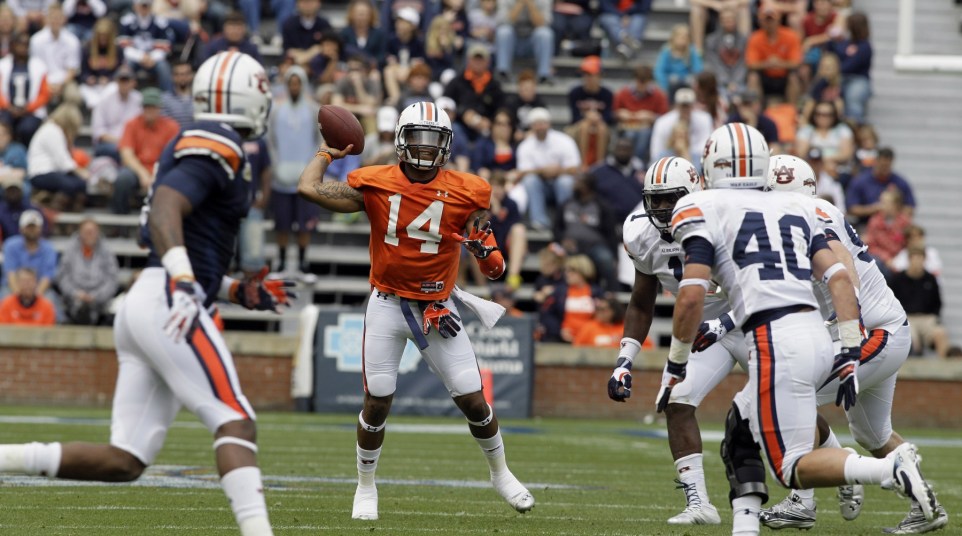Will spring games go extinct, or are they still important?
Here’s a reality within college football: spring games exist because of you.
The glorified scrimmages offer some advantages for coaches — it’s a dress rehearsal of sorts for inexperienced players and a rare full-pads, full-contact evaluation — but the main purpose is to build excitement for the core fan base.
It’s a chance for a team’s most loyal fans to commiserate about the upcoming season, feel like a part of the program and get a glimpse at new players and new starters. It’s one of the better marketing opportunities of the year outside of regular-season games.
But spring games are far from a necessity for college programs.
This year, Kentucky and Texas A&M will not stage spring games due to stadium renovations. The Aggies, in particular, are loaded with football money. Don’t you think if it put them at a competitive disadvantage this fall, the team would find a way to relocate the game or go without it back-to-back years?
Due to a myriad of injuries, Florida may have to modify it’s spring “game” into mostly situational football drills with a scoring system.
Depending on the team and the circumstance, keeping players healthy can be just as important as developing talent and installing systems. Teams already thin at certain positions risk damaging the season, which generally starts less than five months after spring games.
It also denies a coach flexibility. It’s very difficult to pin down practice times for every team at the start of spring ball, mainly because coaches want to reserve the right to change the schedule based on inclement weather and other factors. But there’s no changing a spring game. Once you advertise a place and time, you’re stuck.
Last season, Oklahoma State and Pitt decided to skip the spring game not due to stadium renovations or injuries, but just because the coaches preferred to spend more practice time with young teams than parade the car around the block, so to speak. (The Cowboys instead elected to hold an open practice so that fans would get an opportunity to view and interact with the team.)
“It’s a little bit selfish doing what’s best for the program,” coach Paul Chryst said last February, according to the Pittsburgh Post-Gazette. “You appreciate [the fans]. You don’t want it to come off as not being appreciative. It’s not the intent. But there is real conviction that for this group of guys, the guys in the building … you feel really good that this is the right thing. You hope the people appreciate that.
“The thought behind [the decision], honestly, is to get one more good work day out of them. Most, if not every spring game I’ve been a part of, you really end up sacrificing a lot. It sounds crazy, but just being locked into a place, bad weather. … You’re kind of locked into that day. These days are really valuable for us.”
The spring game, as it’s currently constituted, isn’t in danger of extinction. Teams get 15 organized spring practices. Most coaches don’t mind devoting one of those 15 toward a “game” that provides value to fans and continues a time-honored tradition. It’s not a big sacrifice or a poor trade-off.
But don’t expect for programs to bend over backward if they’re renovating stadiums or dealing with a big number of injuries. And in cases where a team is particularly young, it won’t be shocking to see an SEC team or two go the route of Oklahoma State or Pitt last season.
To answer our own question, spring games just aren’t that important. It’s a nice gesture for fans and it gives media members some fresh material for the doldrums of late spring and summer.
Will it go the way of the Dodo bird? Not any time soon.

